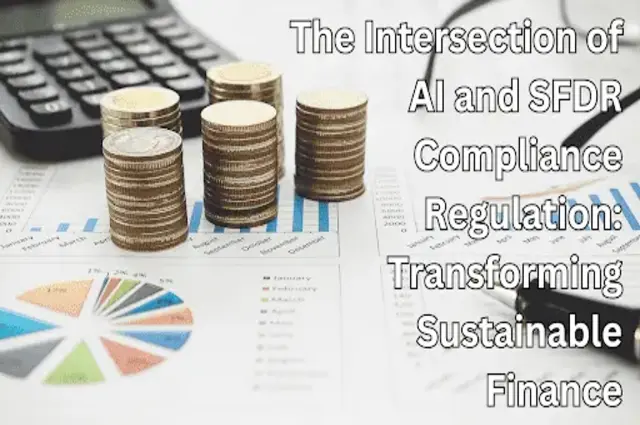Key Takeaways
- A practical employee experience framework is essential for a company’s prosperity. It affects job satisfaction, productivity, and the bottom line.
- Cultural, technological, and physical aspects collectively shape the employee experience and require equal consideration and investment.
- The employee journey should be compelling and positive, from recruitment to offboarding, to foster engagement and loyalty.
- Implementing such a framework involves strategic decision-making, continuous communication, and an adaptable, data-driven approach.
- Tracking progress against crucial goals allows for refining the employee experience strategy, ensuring its ongoing effectiveness and relevancy in a changing world.
Introduction to Employee Experience Framework
A well-crafted employee experience framework can significantly differentiate a company in an intense talent competition landscape. This framework is structured to manage all aspects of an employee’s interaction with the company, aiming to foster a productive and positive work environment. By strategically implementing this framework, organizations can boost satisfaction levels, win employee loyalty, and enhance overall performance.
The core philosophy underpinning the employee experience is the understanding that employees are as much customers of the company as the consumers of its products or services. Just as customer experience (CX) has become a dominant consideration in the marketing sphere, employee experience (EX) has emerged as a critical focus for human resources and leadership teams. An optimized EX addresses all facets of work life, from the physical work setting to the emotional support structures, to create a cohesive and supportive environment that draws the best from its members.
The Pillars of the Employee Experience Framework
Based on a compound structure, the employee experience framework stands on three main pillars that govern the overall quality of the workplace environment.
- Cultural Pillar
Arguably, the company’s soul and culture comprise the shared values, practices, and beliefs that permeate the company’s operations. It encourages employees to embark on a shared vision, establishing a workplace dynamic that is both inclusive and constructive. Respect, trust, integrity, and teamwork are not just buzzwords; they are vital components cultivated by solid leadership and embraced by all. A thriving company culture is built on a shared understanding of goals and individual roles contributing to success.
- Technological Pillar
The rise of the digital age has revolutionized the way work is done. The technological pillar emphasizes delivering seamless, efficient, and empowering tools to employees. This includes everything from robust cybersecurity measures that protect employees’ work and personal data to accessible digital platforms that enable collaboration across geographical boundaries. Moreover, it addresses the integration of artificial intelligence and machine learning to remove mundane tasks from the employees’ workload, freeing them to address more strategic, creative endeavors.
- Physical Pillar
Whether it’s the ergonomic comfort of office chairs, the appeal of communal spaces, or the convenience of the office’s location, the physical working environment significantly impacts daily experiences. Inviting workspaces not only enhances mood and health but can also spur creativity and collaboration among employees. The physical pillar is not restricted to the confines of the office; it also encompasses the enablement of remote work, acknowledging the shift towards flexible workplace models and considering employees’ home office setups.
Charting the Employee Journey
Every phase in the employee lifecycle represents a touchpoint that can profoundly influence their perception of the company and workplace satisfaction.
- Recruitment and Onboarding
The initial phase in the employee journey is pivotal. A transparent and engaging recruitment process reflects the company’s commitment to talent and sets the stage for future interactions. Similarly, onboarding is more than just a process of induction; it’s about ingraining new hires into the company culture, connecting them with peers and mentors, and setting them on a path to success. The best onboarding experiences are personalized, extend beyond the first week, and establish a support system for the new employee.
- Engagement and Empowerment
Keeping the workforce passionate about their work requires continual engagement and empowerment. Employees who feel their contributions matter are more likely to innovate and drive the company forward. Furthermore, empowerment comes from a place of trust, providing employees with autonomy and the tools they need to make decisions that align with company objectives.
- Development and Growth
Employees strive to grow within their roles, and organizations must reciprocate by offering paths for development. Effective professional growth programs include continuous learning opportunities, clear career pathways, and constructive feedback mechanisms. This continual investment in an employee’s potential yields a more capable workforce and communicates that the company values its human capital.
- Retention and Recognition
An organization’s ability to retain talent is a testament to its health. Practices that promote recognition, such as fair compensation, rewards for outstanding work, and transparent communication about company performance, contribute to a positive workplace atmosphere where employees want to stay and contribute to long-term goals.
- Departure and Transition
Departures are inevitable, yet they, too, are part of the employee experience. A respectful and constructive offboarding process, including exit interviews and transition support, can offer insights into improving the workplace and turning departing employees into potential brand ambassadors.
Practical Steps to Implementing the Employee Experience Framework
Implementing a compelling employee experience strategy requires detailed planning, a commitment to change, and a mindset focused on continuous improvement.
- Leadership’s Role
Leaders must champion the principles inherent in a robust employee experience strategy. They should consistently demonstrate the organization’s values through their actions and decisions, setting an example for employees at all levels.
- Clear Communication Strategies
It is important to establish open communication channels between employees and management. Any communication barriers should be removed to ensure effective communication and mutual understanding between both parties. This transparency encourages exchanging ideas and creates an environment where employees feel heard and understood.
- Employee-Centric HR Policies
Policies prioritizing employees’ needs through health benefits, parental leave, or learning and development initiatives indicate that the company values its employees as individuals, not just as workers.
- Feedback and Continuous Improvement
An environment that welcomes feedback fosters a culture that thrives on change and growth. Encouraging regular feedback from employees allows for quick adjustments to policies and practices based on concerns.
- Data-Driven Decisions
Making data-driven decisions is crucial for tailoring employee experiences effectively. Metrics can illuminate areas needing attention and help to pinpoint successful initiatives worth expanding.
Measuring Success and Overcoming Challenges
Deploying an EX framework is a dynamic process requiring persistent measurement and refinement. Methods such as employee satisfaction surveys, performance metrics, and turnover rates offer quantifiable insights. Nonetheless, understanding the challenge of creating a one-size-fits-all solution is essential, as employees come from diverse backgrounds with varying needs and preferences. Regular review sessions can ensure strategies remain relevant and impactful.
The Tangible Benefits of an Enhanced Employee Experience
Diligence in fostering a wholesome employee experience pays dividends. Engaged employees are more productive, often going the extra mile, directly impacting company outputs and customer satisfaction. Furthermore, organizations that attract and retain the best talents enjoy a reputational edge in the marketplace. Enhanced innovation and creativity stem naturally from a valued and inspired workforce. Overall, these efforts have positioned the company as a leader in its industry and as a pinnacle of workplace excellence.



 Delving into the Unseen: How Engine Oil Dictates Car Efficiency
Delving into the Unseen: How Engine Oil Dictates Car Efficiency  Essential Protection for Tactical Missions: Gear, Strategy, and Safety Essentials
Essential Protection for Tactical Missions: Gear, Strategy, and Safety Essentials  The Mythical World of “American Gods”: Why Neil Gaiman’s Tale Endures
The Mythical World of “American Gods”: Why Neil Gaiman’s Tale Endures  Developing Analytical Skills Through English Literature
Developing Analytical Skills Through English Literature  What to Consider When Choosing an Online Real Estate Course
What to Consider When Choosing an Online Real Estate Course  The Intersection of AI and SFDR Compliance Regulation: Transforming Sustainable Finance
The Intersection of AI and SFDR Compliance Regulation: Transforming Sustainable Finance